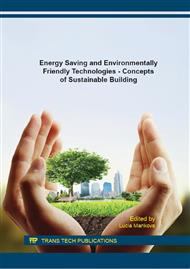p.641
p.649
p.657
p.669
p.676
p.684
p.692
p.699
p.707
Errors of In Situ Illuminance Measurements
Abstract:
Lighting conditions in buildings are verified by experts on a daily basis. Such verifications may be done at several phases in various ways. In the field of daylighting, it is common to make an assessment within the pre-design and in-design phases of a construction work throughout calculations, only rarely by measurements. This approach is the opposite of artificial lighting design, which is done within the in-design phase by calculations and is verified by measurements in post-realization phase. The verification of artificial lighting design is required by the building and public health authority otherwise buildings cannot be approved to use. In the field of daylighting, measurements could be performed as well, nevertheless those are often problematic because regulations usually require fulfilments of the daylight factor which can be determined only under CIE overcast sky. Howbeit, both artificial lighting and daylighting measurements are influenced by many errors, e.g. errors of light measurement instruments, measurement conditions, measurement methods and human factor. The paper is focused on this aspect of lighting design, more specifically on the daylighting measurement errors.
Info:
Periodical:
Pages:
676-683
Citation:
Online since:
January 2016
Authors:
Keywords:
Price:
Сopyright:
© 2016 Trans Tech Publications Ltd. All Rights Reserved
Share:
Citation:


